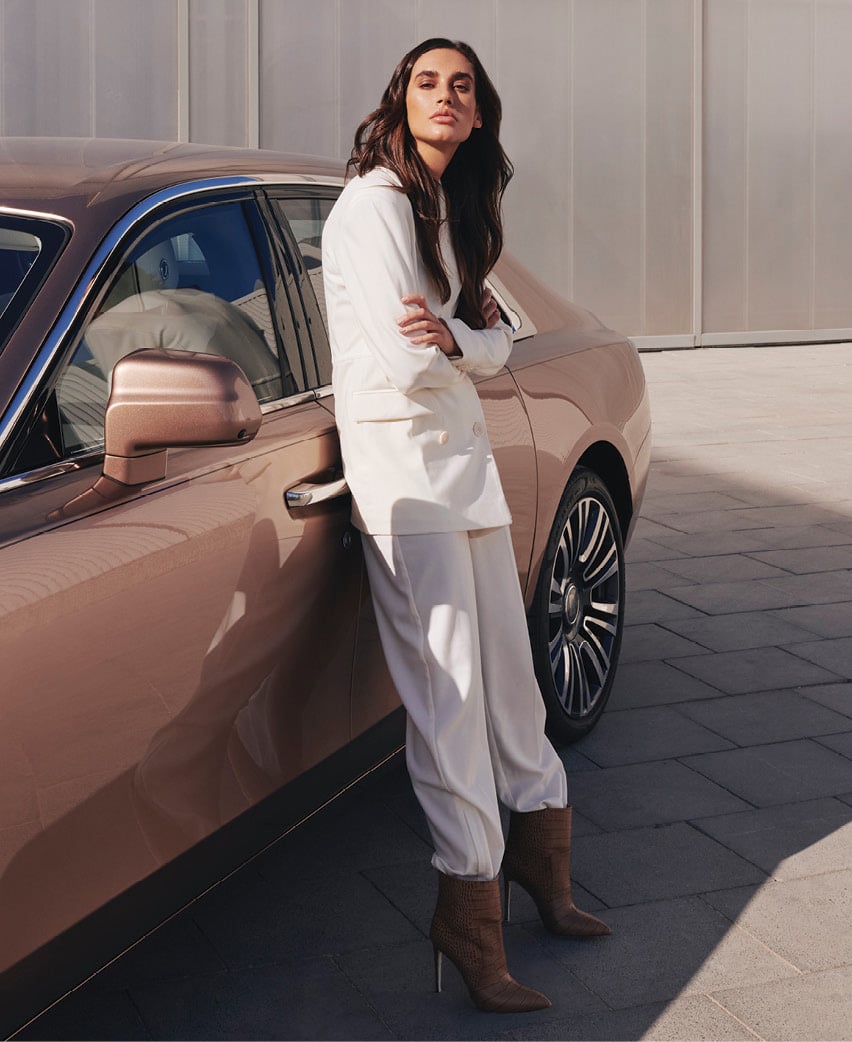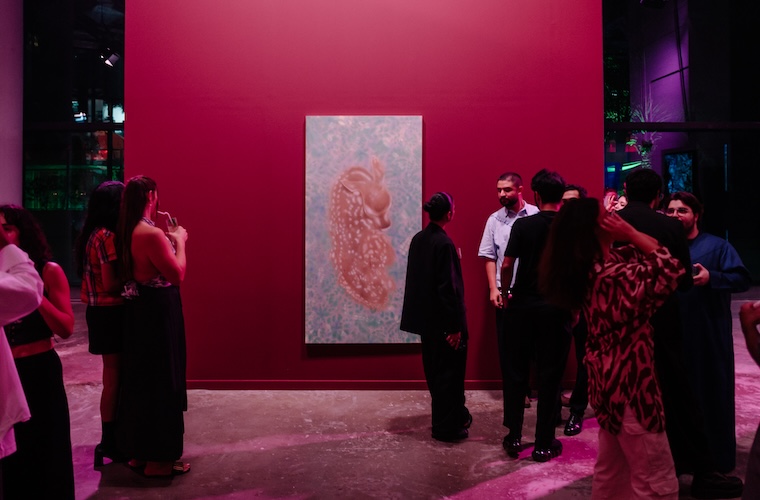Malak Abu Qaoud, Director of ICD Brookfield Place Arts Programme, discuss the lifestyle property’s pathway to decentralising spaces, her passion for the arts, and fostering education with culture and community at its heart.
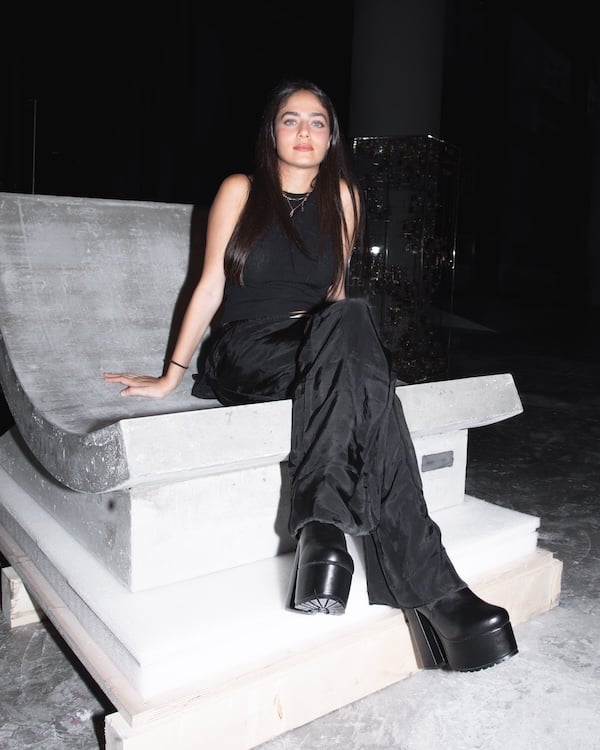
Malak Abu Qaoud, Director of ICD Brookfield Place Arts Programme. Photography: Omar Sha3
What do the first 30 minutes of your day look like, your morning routine?
I wake up around 7am every day. I really try not to check my notifications first thing; otherwise, I’ll feel anxious about the day ahead. Sometimes, I wake up earlier and go for a walk along the beach boardwalk, or I fit in a workout at one of the gyms at ICD Brookfield Place. The facilities are great, so it’s easy to make exercise part of my routine. Then, I start my day with a coffee and a catch-up call with my long-distance friend and colleague to discuss work updates and brainstorm future ideas.
Tell us about your career journey.
I’ve been working since I was a kid. My first job was narrating children’s educational computer games when I was nine, and I did that for about seven years while I was in school. When I was living in Montreal, I was always ambitious about finding side projects, internships, and extracurricular activities. I joined a student-run Palestinian human rights association at university, which allowed me to work with artists to raise money for different causes. This led me to join an art consulting and production agency, where I was eventually hired full-time. During my time there, I learned how to work closely with artists, produce exhibitions, and create a community. When I joined ICD Brookfield Place, I applied a lot of what I had learned over the years to my role here. I now run the Arts & Events programme in the building, where my team and I curate public exhibitions and oversee cultural placemaking initiatives within ICD Brookfield Place.
Under your directorship, how has the arts programme evolved at ICD Brookfield Place since its inception and how do you aim to steer its future direction?
I joined ICD Brookfield Place when the building had just opened, so the identity of the arts programme was mine to shape, without a pre-existing reputation to change or uphold. We started small but were very careful with curation. Our main strategy has always been to support the regional creative community, platform their work in a public setting, and create an ecosystem that connects artists, tenants, and the public. We’ve been very consistent in curating exhibitions that are accessible to everyone, and now we’re pushing the boundaries and messaging with our shows. We strive to articulate progressive social issues and pave the way for change. In the future, I’d love to expand our arts programme beyond the building and collaborate with regional institutions to fund artist residencies and grants.

Photography: Seeing Things
What sets it apart from the rest of the art spaces in the UAE? How do you strategise the offerings in order to create a strong regional identity?
To begin with, ICD Brookfield Place is a commercial office building located in a financial district. Our arts programme operates very differently from a traditional white-cube gallery because we are based in a highly public setting. We bring people from all walks of life together in one space, making us an important part of the ecosystem. We offer something collaborative, communal, and non-traditional, resulting in a true interdisciplinary melding of interests and specialties with exciting outcomes. We don’t fit into a specific category of art institutions, which allows us to continuously innovate and evolve based on the needs of the public.
“Public art is not meant to be intimidating; rather, it is engaging because it exists in communal areas enjoyed by people from all walks of life”
To you, what role does the ICD Brookfield Place Arts Programme play in the wider cultural landscape?
ICD Brookfield Place is a space for people – we’re open to the public and inclusive. We aim to curate shows that are culturally accessible, allowing everyone to truly enjoy and take part in the conversation. We are setting a new benchmark for what non-institutional forms of public art can achieve in the city. Placing art within shared spaces creates engaging environments that allow the public to build and foster organic connections with their surroundings. Through this, people find value in their environment. Public art is not meant to be intimidating; rather, it is engaging because it exists in communal areas enjoyed by people from all walks of life. There is so much joy in witnessing people’s reactions to the space – it’s the best kind of adrenaline.
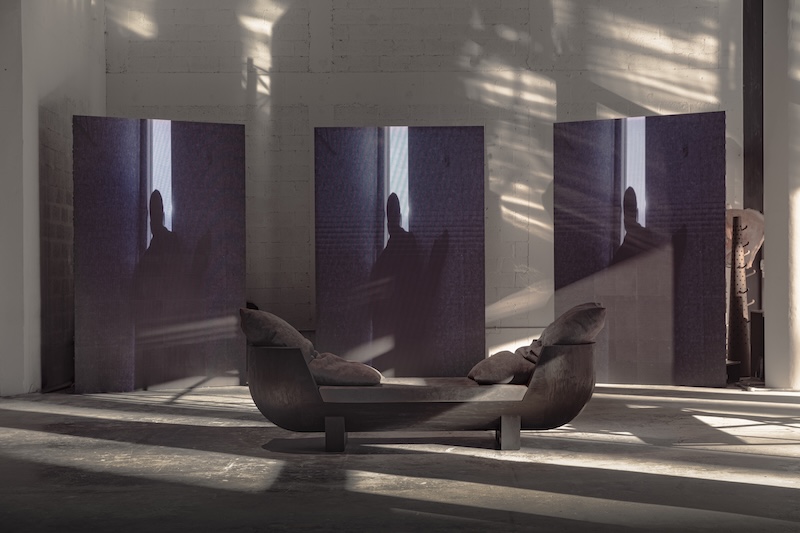
How do you think your early experiences of art have shaped your vision as the Director?
My older sisters studied fine arts in college, and growing up, I was always inspired by them. My dad also used to paint when he was younger, so I grew up in a creative environment. My parents always encouraged me to explore my creativity, whether at home or at school. I think that’s what gave me the confidence to trust my instincts when programming the next show. It’s something I just feel, and I go for it – which is a blessing because it allows me to explore and take risks. Most of the time, it works out great, but other times, we learn – and that’s the best way to grow.
What are some of the biggest shifts in the art space throughout the past five years – have any of those changed the way you approach when working on the programmes?
I sometimes feel that exhibitions can become repetitive and not very exciting; it’s rare that I leave wanting more. Usually, the shows that have that effect are the more experimental ones. At ICD Brookfield Place, I always strive to explore different mediums of art – whether through scenography and design, musical programming, utilising unexpected areas of the building, or even the messaging of the show. It’s important to keep things fresh and keep people excited for what’s next.
What are you looking forward to this year – any highlight that you’re personally excited to see?
Absolutely! Our current show with Miles Greenberg, titled “Le Miroir,” is a multi-channel film (ACT I & ACT II). The first act was a durational performance filmed at a historical heritage site in Marrakech as part of the 1-54 Art Fair, while ACT II was filmed in the UAE desert shortly after. The result is beautiful – the film explores human duality and emotional transformation.
View this post on Instagram
How do you remain open-minded and interested in discovering new creatives? Are there any specific people or events that have influenced your curatorial lens?
It’s hard to always be switched on and stay up to date with current trends or upcoming shows, but most of the time I come across new creatives on social media, through other artists, or by spending time in different cities. I find a lot of talent in Jordan and Palestine – it’s incredible. When I discover a creative, I try to fit them into the programme or introduce them to other institutions or galleries in the UAE to help grow their careers. There have been some key players in the growth of the programme since its early stages – they have been incredibly supportive, and we have regular catchups and collaborations.
What’s been key for you in building that authentic community around these projects you’ve worked on?
Honestly, it’s about staying true to myself and the programme. I’m very passionate about what I do because I genuinely enjoy it, and I think that comes across naturally. People can always tell when something feels forced or inauthentic. It takes patience, but eventually, the community builds organically, and people start to recognise and appreciate the hard work. Five years in, I couldn’t have imagined the programme would grow this much, this fast!
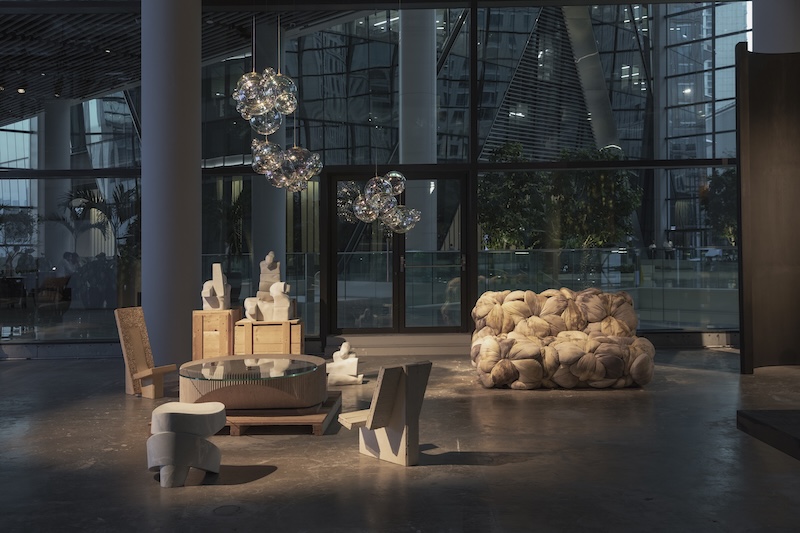
This is The Design Issue – what is the first design that has left an impression on you?
I studied interior architecture, so I grew up highly attuned to my surroundings. This is probably why I’m so interested in how humans interact with space and how space interacts with art. My earliest impression of design when I was younger was probably my grandparents’ home in Jerusalem, their house is so historic, and I loved learning about the cultural preservation of architecture. I’m very interested in conservation of cultural identity and the way architectural elements tell stories of time and place.
April’s – The Design Issue – Download Now
– For more on luxury lifestyle, news, fashion and beauty follow Emirates Woman on Facebook and Instagram
Images: Supplied







